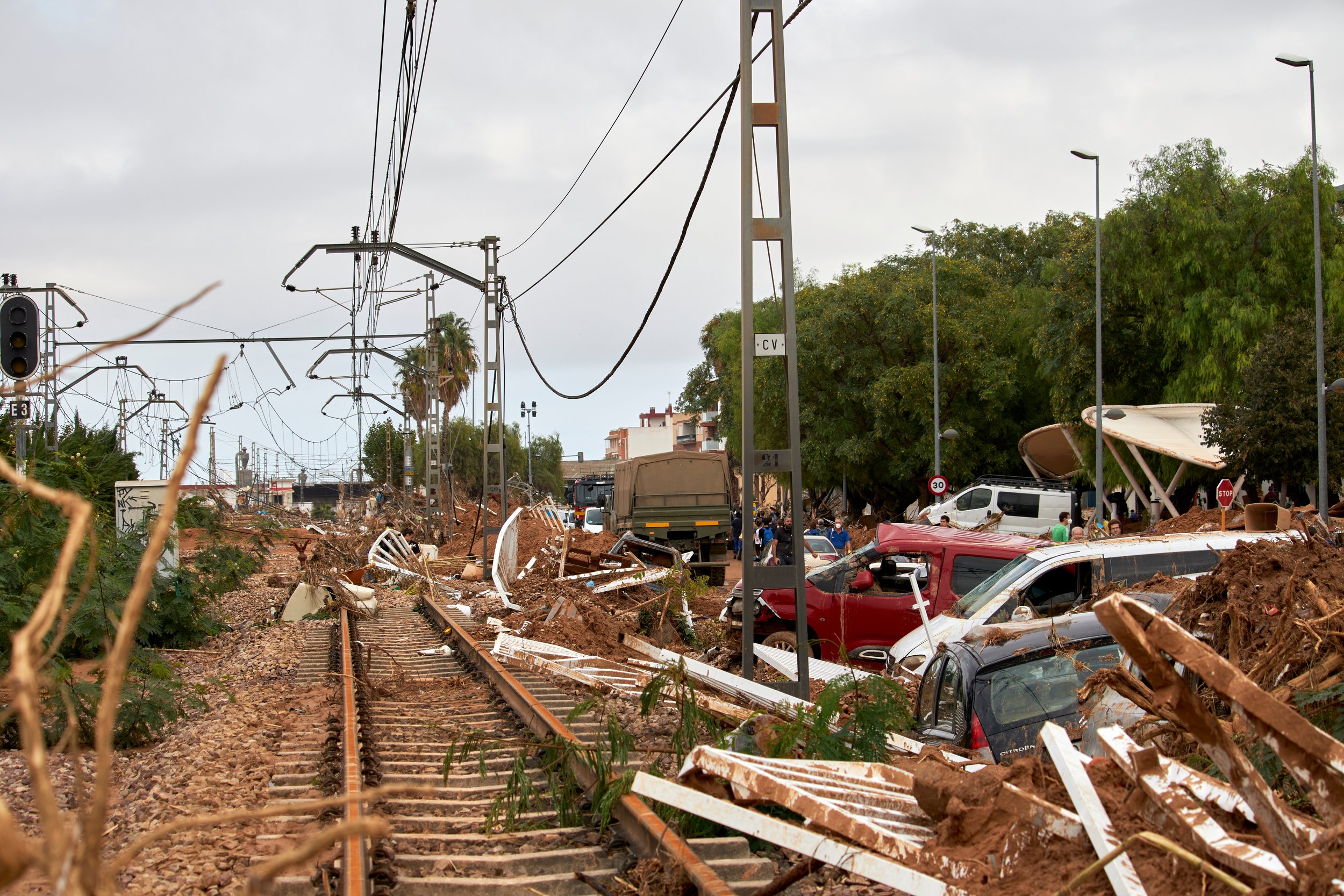COP29 and the Future of Water for Climate Action
After a week fraught with hope, tension and disappointment, COP29 – hosted in Baku, Azerbaijan – officially closed in the early hours of Sunday, 24 November. Much of the focus during this year’s conference was on the creation of a New Collective Quantified Goal (NCQG) to increase climate finance for developing countries.
Though the outcome of negotiations disappointed many, some hopeful steps were taken at COP29, including the centring of water and its significance in the context of climate change.
@COP29 Baku Azerbaijan. Nearly 200 countries attended the Baku, Azerbaijan Conference of Parties (COP).
Water in climate crisis
The Azerbaijani Presidency laid specific emphasis on the importance of water in its Agenda Letter with the claim that ‘water is at the heart of climate change’. This emphasis builds on COP28’s UAE Framework, which identified water as a priority for building climate resilience – not only because water is such a critical resource, but also because water is increasingly being recognised as a frontline in the global climate crisis.
For many, floods or drought represent the most direct impact of climate change. Over the last 20 years, water-related events affected over 90% of people who suffered a disaster, and floods caused nearly 95% of infrastructure loss and damage. Currently, 2.2 billion people do not have access to safe drinking water, while about half of the world’s population is subject to severe water scarcity.
As climate change continues to impact access to water and cause water-related disasters that lead to pollution, destruction and loss of life, the need to centre water in the climate solution has never been more evident.
Floods in Valencia, Spain, in November 2024, destroyed key infrastructure and led to the deaths of over 200 people.
Endorsing water for climate action: the Baku Declaration and Dialogue
COP29’s Water for Climate Pavilion emphasised water as a critical component of the climate solution, without which the Paris Agreement ‘will likely be out of reach’. To meet the requirements of the Paris Agreement, policymakers and innovators need to turn to water as a key player in adaptation and mitigation.
Enter the Baku Declaration on Water for Climate Action. Now endorsed by almost 50 countries and non-state actors, such as the WWF, Water.org and Water Equity, the Baku Declaration calls on national governments and other stakeholders to:
Take integrated approaches to combat the causes and effects of climate change on water sources and ecosystems
Integrate water-related mitigation and adaptation measures into national climate policies, and
Promote dialogue and partnerships to strengthen the generation of scientific evidence and enhance water-related climate policy actions.
The Baku Declaration also established the Baku Dialogue on Water for Climate Action, with a strong recommendation to carry on the conversation COP-to-COP. The Baku Dialogue will focus on centring water and its role in climate change – both as indicator of crisis and potential “resilience multiplier” – and encourage stakeholders to promote action through consistent engagement.
The message is increasingly clear: water considerations must play a central role in climate action.
@COP29 Baku Azerbaijan. Inger Andersen, Executive Director of UNEP, and Mukhtar Babayev, COP29 President, in discussion at COP29.
Water and adaptation: building resilience
In the climate context, adaptation is anticipating the effects of climate change and taking action to prevent or minimise potential damage. For water, that means ensuring that water and sanitation systems can withstand the impacts of climate change, which range from sudden and unmanageable rainfall, to desertification, to ice-water and glacier melts, to droughts, and so on.
Countries can adapt to these effects by, for example, upgrading water infrastructure, creating early warning systems, and implementing conservation programmes that protect or restore water sources. Adaptation also involves building mechanisms for resilience, so that communities can bounce back more quickly after climate-related disasters.
For example, flood-affected areas often face a dire shortage of clean drinking water, as floods lead to water-pollution and contamination. With localised water purification solutions, communities can gain access to purified water during disaster recovery.
Units like the Chelsea Water's Trailered Purification Plants can provide WHO-standard drinking water in emergency situations and during disaster recovery.
Water and mitigation: the water-energy dilemma
Mitigation relates to how countries, organisations and individuals prevent or reduce the emission of greenhouse gases (GHG) to make the impact of climate change less severe. Usually, this involves reducing the sources of GHG by, for example, increasing the use of renewable energy. Mitigation also involves the storing of GHG to prevent harmful gases from releasing into the atmosphere.
The key ingredient in mitigation strategies, however, is fresh water. Processes like manufacturing solar panels, producing biofuel and generating green hydrogen are all water intensive, and often require purified or desalinated water. On the other hand, water purification strategies and methods, such as desalination, can be energy intensive, potentially contributing further to GHG emissions. Without adequate water supplies and energy-efficient purification methods, our mitigation strategies may fail.
Solutions that use clean energy can help organisations, companies and countries mitigate their environmental impact while providing clean water.
A balancing act: the need for a sustainable approach to water management
Integrated Water Resource Management (IWRM) is an internationally recognised approach to adaptation and mitigation that seeks to balance competing water demands without compromising vital water sources and ecosystems.
Successful IWRM would enable at-risk communities and nations to build resilience against the effects of climate change, and this is where the private sector has a key role to play. As climate change and crises drive greater demand for clean water, innovators in the private sector can bolster countries’ adaptation and mitigation efforts. More than ever, people need multilateral and private sector solutions from a range of sources.
Energy-efficient water purification, mobile purification units and filtration solutions can help communities, industries and organisations adapt to the effects of climate change and mitigate their impact on the environment.
Book a consultation with Chelsea Water today to learn more about our unique units.






